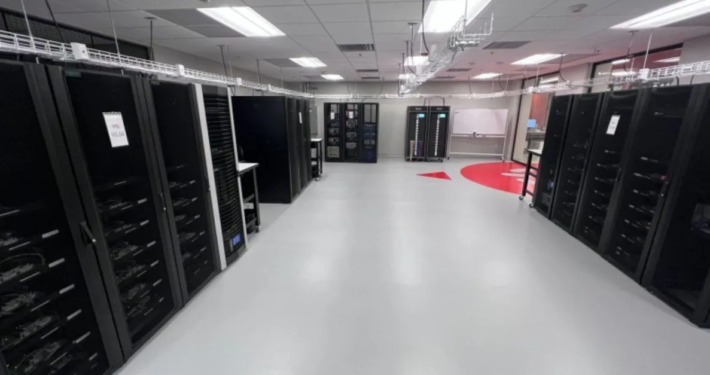

How our RTDS lab is helping utilities seamlessly integrate SmartValve into their grids
July 25, 2023
Integrating new technologies on transmission grids can raise concerns for system operators who are responsible for safe reliable operation of the grid. In this article, Francesca Madia Mele explains how Smart Wires uses its on-site RTDS lab to validate specific functionalities of SmartValve before it is deployed on a customer’s grid.

As part of the Analytics team, I work on developing tools and models for SmartValve, our transformerless modular Static Synchronous Series Compensator (m-SSSC) that is part of the FACTS family of devices. Tools and models are specifically designed for leading network planning software, enabling us and our Customers to automate, optimize, and conduct reproducible studies to assess grid performance. Our ultimate goal is to assist our customers in seamlessly integrating SmartValve into their complex transmission systems. As part of the Analytics team’s efforts, we have successfully completed a range of complex network studies for our global customers. This includes conducting closed-loop factory testing using RTDS® simulator, which I explain in this article.
Starting in 2021, our headquarters at Research Triangle Park in North Carolina, USA, became home to our RTDS Laboratory. This facility allows our global team of power system engineers to remotely access the RTDS simulator, a specialized hardware and software system designed to accurately model and simulate the real-time behavior of electrical systems. The Analytics team employes the RTDS simulator for conducting closed-loop factory testing of our power flow control technology and high-fidelity power system studies. These studies are based on our device portfolio and aim to validate the features and de-risk the SmartValve-based deployments at customer sites around the world.
To develop accurate models of our customer’s grids, we leveraged the advanced software tool, RSCAD®. By simplifying the peripheral network into voltage sources and linked impedances, we created a detailed model that allowed us to analyze the system dynamic performance when our grid-enhancing solution is incorporated. Through extensive control hardware-in-the-loop (CHIL) testing compared to load flow and dynamic performance results, we ensure the accuracy and reliability of our solutions.
In our most recent project in Latin America, we employed CHIL testing to evaluate the interoperability between SmartValves and the Customer’s protection relays operating on the line, demonstrating that SmartValve could seamlessly integrate with the utility’s existing protection and automation systems. Specifically, the protection relays needed to have the ability to send a bypass command to the SmartValve in certain scenarios, in line with the system operator’s requirements. This was possible due to SmartValve’s external Low Overcurrent Ride Through (LOR) feature, which ensures the safety and stability of the grid during unforeseen events. The external LOR feature allows the device to receive a signal from the Customer’s protection system (i.e. protection relays detects the overcurrent event), upon which the device immediately stops injection and enters bypass mode temporarily.
To complete the testing of the LOR feature and due to the large network size under study, we used two RTDS Simulator units. The network model included fault branches accounting for 18 locations, power systems stabilizer (PSS) and automatic voltage regulator (AVR) controls for synchronous machine models, and a combination of PI section and frequency dependent models for transmission lines. The RTDS Simulator setup involved connecting one chassis NovaCor® (custom-developed hardware platform, core of the Simulator) to the SmartValve control boards and the second chassis to the protective relays. Through the CHIL configuration, we could simulate different fault cases, adjust fault parameters, and analyze the impact of different injection modes on the power system operation.
The work involved several tests to validate the dynamic performance of the SmartValve, including the verification of the SmartValve bypass operation during overcurrent scenarios, verification of the protection relays’ behavior in different fault cases, and verification of the SmartValve’s operating modes and behavior under different grid conditions.
The SmartValve deployment studied as part of this work is now fully operational at the customer’s site.
If you’d like to learn more about RTDS testing for SmartValve, check out the multiple technical papers on this topic and get in touch with us:
- Analysis, Design, Implementation and Validation of an RTDS test benchmark for system integration of M-SSSC solutions in the Santa Marta substation (2023)
- Real-Time Simulations to Validate the Impact of M-SSSC Devices on Protection Coordination in Power Systems (2023)
- De-risking a Revolution in Power Flow Control at Smart Wires (2023).
Contributing expert
For press related purposes, please contact us at marketing@smartwires.com.
Dive deeper into related content
Explore our products and services
Talk to our experts


